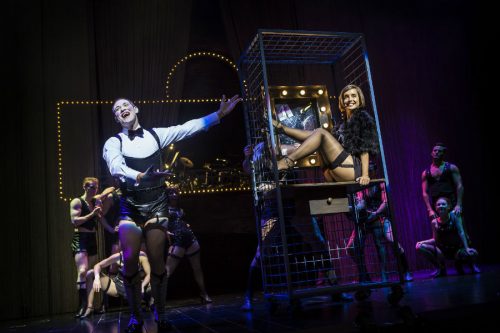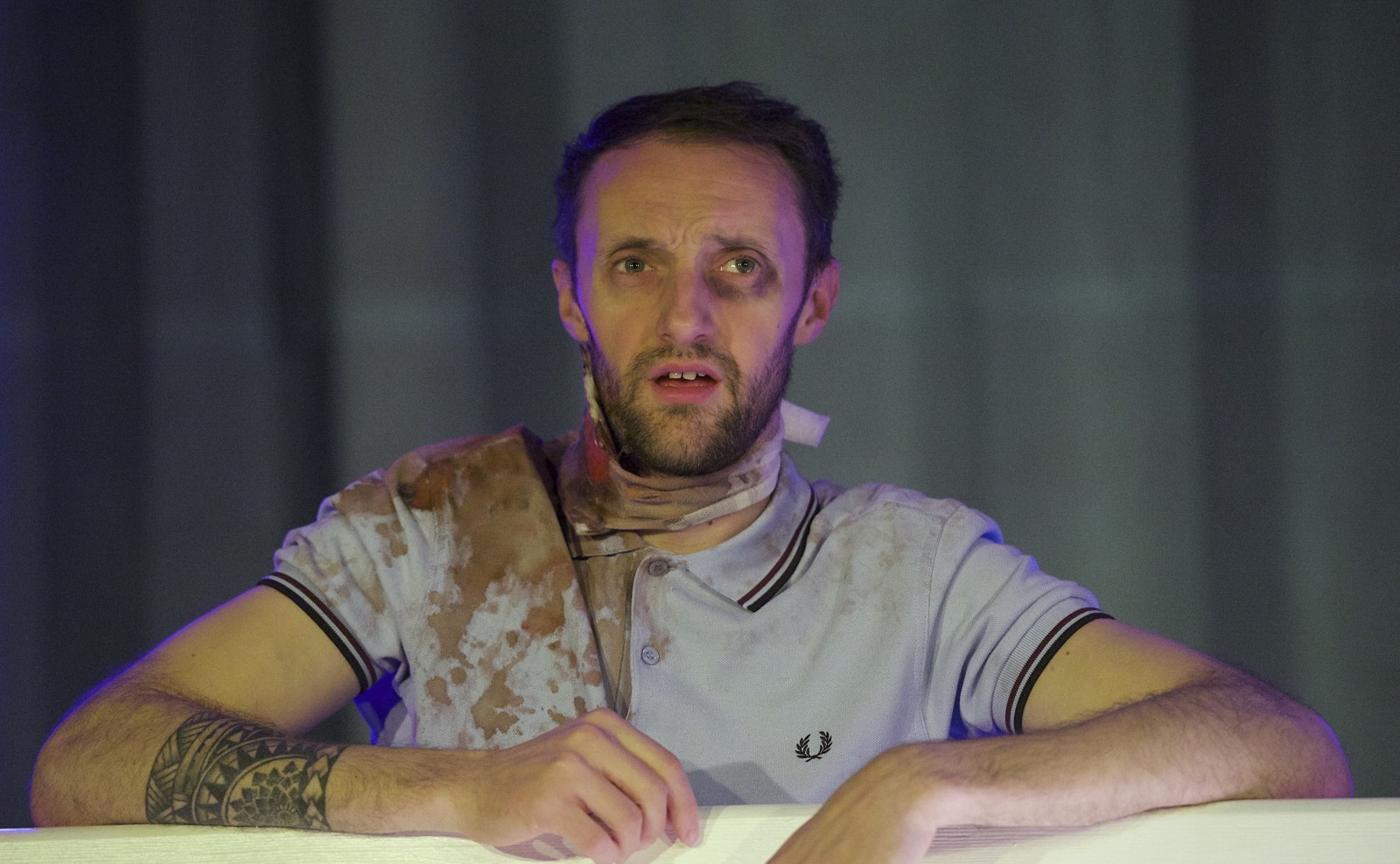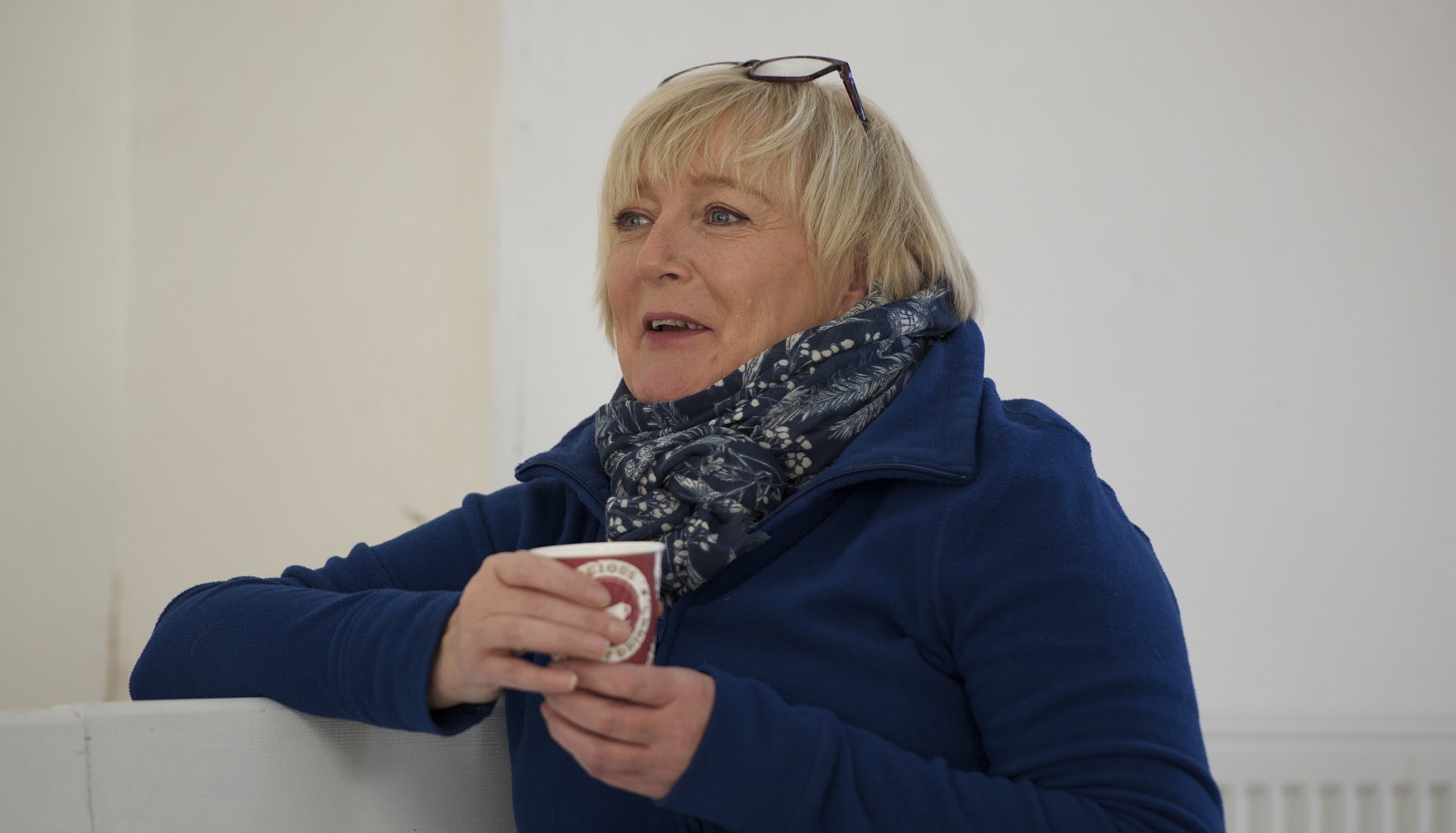Cabaret is based on I Am A Camera, written by John Van Druten and adapted from Christopher Isherwood’s Goodbye to Berlin. The current production differs from the original in that several songs have been replaced. By the way, the play garnered the shortest, but wittiest review in history when Walter Kerr of the New York Herald under the headline ‘I Am A Camera’, wrote ‘Me no Leica.’
The work reflects the decadence of mid wars Berlin and the impending rise of the Nazi Party. It begins on New Year’s Eve 1930 when Clifford Bradshaw, an American writer passes through German Border Control where he bumps into Ernst Ludwig, a German returning from a trip to Paris who does a quick switch of luggage as he says he has brought more French trinkets than he is allowed. He recommends the boarding house owned by Fraulein Schneider as being a cheap place for Bradshaw to stay and offers to take him out to the Kit Kat Club that night.
The Kit Kat Club is an ‘anything goes’ establishment reflecting the atmosphere of inter-war years Berlin and Bradshaw not only dances the night away with the showgirl Sally Bowles but also has a fling with a chorus boy he had met some time earlier on his European travels. The following day Sally Bowles, who has been fired from the club, turns up at his room and moves in with him. Although it appears that they have a steady relationship it transpires that she has been playing away on an industrial scale as, when she tells Bradshaw that she is pregnant, she is unable to narrow down the identity of the father. She offers to have an abortion, a procedure to which she is no stranger, having had several before, but Bradshaw persuades her not to. In a parallel relationship, Fraulein Schneider accepts a proposal of marriage from her gentleman friend Herr Schultz who has a fruit and veg business. The nuptials are called off when it is suggested to the fraulein that it might not be a good idea to marry a Jew with the Nazis on the rise, especially as Schultz has had his business vandalised by a brick through the window and a Star of David daubed on the window. Despite his pleading, she calls off the wedding. Bradshaw’s support for Schultz and his refusal to act for the second time as a courier for Ludwig, after realising that he was smuggling on behalf of the Nazis, earns him a beating by a group of fascists and he decides to leave for home. Bowles refuses to go with him and informs him that she has had the abortion without his agreement.
The story ends with Bradshaw passing back through the border control point where the story started, but this time in the opposite direction.
Although the interwoven stories are the thrust of the piece, the atmosphere is just as relevant and is superbly conveyed by the singing and dancing, especially the set pieces in the Kit Kat Club of which ‘Tomorrow Belongs To Me’ which brings Act One to a close is a real slap-in-the-face moment. The songs set in the boarding house and the fruit shop are much more poignant.

The set design was brilliant. The curtain opens to reveal a black wall with the word ‘WILKOMMEN’ written on it in three lines, the top line being WIL, the second KOM and the third MEN. The middle of the ‘O’ opened to reveal the face of Emcee who welcomed the audience. A nice nod to Van Druten’s play was that the opening in the letter was in the form of a shutter on a camera, geddit? The letter ‘E’ on the bottom line acted as a kiosk with the top part opening to reveal the border guard. When the show got underway the wall disappeared and more conventional scenery replaced it. The club band was in an elevated section at the back of the stage, whilst a stairway on wheels acted as the main prop on the dance floor, enabling the singers and dancers to be elevated. The boarding house and fruit shop were also atmospherically set, the former looking particularly seedy. This is how both the club and the character of Sally Bowles should also have been portrayed but the Kit Kat looked glamorous, as did Louise Redknapp. The Sally Bowles of the original story was anything but, wearing green nail varnish which Isherwood said drew attention to her hands which were dirty and nicotine stained. Louise Redknapp’s vocal range and dancing abilities were also very good, whereas the character could neither sing nor dance very well, which is why she was fired from the club. She was also a tad too wholesome to be convincing as a woman who had fled from her home in England to perform in a grubby establishment in decadent Berlin, having a succession of lovers and using abortion as a routine method of birth control. I suspect that there had been amendments to the script to take this into account. Susan Penhaligon as Fraulein Schneider and Linal Haft as Herr Schultz displayed real empathy towards one another and were a great conventional counterpoint to the hedonistic behaviour of the rest of the characters. Nicholas Tizzard was suitably shifty as Ernst Ludwig whilst Basienka Blake was superbly comic as Fraulein Kost, the tart with the heart, who also had a room at Fraulein Schneider’s house. She seems to have had more sailors than the Royal Navy and one of them appears naked for a moment so be warned. Actually, he is not totally naked as, being a diligent serviceman, he keeps his hat on. Charles Hagerty was a revelation as Clifford Bradshaw, his singing, acting and dancing being of the highest order. The night, however, belonged to Will Young as Emcee. He had been given strict instructions to turn the campometer to 11, but he ignored this and cranked it up to 20! Whenever he was on stage he took total ownership of the space, even when he was walking in the background during one of the more subdued numbers. Charisma does not even begin to describe it.
Apart from my few quibbles about the characterisation, I am happy to admit that this is one of the best musicals it has been my pleasure to have seen. Me Leica A Lot!



